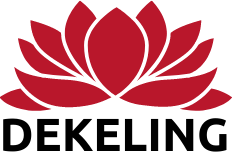Ngöndro Series
Ngöndro is a series of practices taught in every school of the Tibetan Buddhist tradition. The practice of Ngöndro helps clear away obstacles and strengthens the accumulation of merit and wisdom. Gradually body and mind are ripened with view, meditation, and experience conducive to forward momentum in understanding and direct experience.
Ngöndro consists of two categories of practice:
the ‘outer preliminaries’ of The Four Thoughts that Turn the Mind to Dharma (precious human birth, impermanence and death, karma and the defects of samsara). Students work individually, guided by Lama Lekshe or Teacher George for this practice for about 7 hours over time.
and the ‘inner preliminaries’ of Refuge, Vajrasattva Practice, Mandala Offering and Guru Yoga, each of which require a little over 100,000 repetitions of a brief practice.
In 2026, our Ngondro students will receive instruction in Vajrasattva, Mandala and Guru Yoga. (Sincere students just beginning can get ‘catch up’ teachings from our teachers.) There is an on-going, open Ngöndro Practice Group as well.
2026 Ngondro: Vajrasattva Practice : 10.17.25 (click link to register for 10.17.25)
Vajrasattva practice is a powerful way to purify body, speech and mind from confusion and previous harmful actions. Our traditional approach uses recitation of liturgy, visualizations, and mantra recitation, as well as extending the practice beyond formal mediation to daily life.
2026 Ngöndro: Mandala Practice : 10.24.25 (click link to register for 10.24.25)
In Mandala practice, we learn to open to abundance and generosity in all its forms. This contributes to selflessness, reduces grasping, and creates further foundation for the awakening of heart and mind, using liturgy, visualizations, and chanting to ritually create and offer over 100,000 visualized ‘universes’ of precious environments and objects. Like all the ngöndro practices, mandala practice is concurrently extended to daily life.
2026 Ngöndro: Guru Yoga Practice : Date TBD
The student of guru yoga practice uses the same methods as in the previous three, but with different liturgy, visualizations and recitations. Guidance at this stage is more individual as the student connects to the teachers, teachings and mind itself as they complete ngöndro and make a traditional feast offering to the community in celebration.

